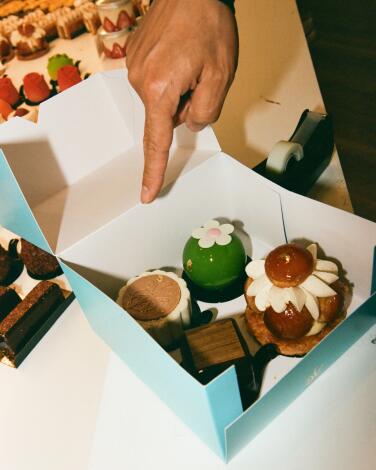While many Japantowns across the United States have largely disappeared, Los Angeles boasts not one, but two vibrant Japanese enclaves. Little Tokyo is well-known, yet Sawtelle, located on the Westside between strip malls and office buildings, offers a unique glimpse into the legacy of Japanese immigrants in the region. This neighborhood, smaller in size but rich in history, encapsulates a tale of resilience and transformation.
Sawtelle’s evolution from a refuge for Japanese immigrants to a bustling cultural hub reflects both the challenges and triumphs of its residents. In the early 20th century, the area became a haven for immigrants who faced discriminatory laws, such as the 1913 California Alien Land Law, which restricted their ability to own property. In this less developed area of the Westside, landowners turned a blind eye, enabling Japanese immigrants to carve out a community where they could build new lives.
Historical Significance and Community Building
During the 1910s, Sawtelle, affectionately known as “so-te-ru,” attracted many Issei or first-generation Japanese immigrants. From 1920 to 1925, the neighborhood’s population tripled, fueled by the arrival of Japanese farmers, the burgeoning film industry, and the establishment of UCLA. Residents created nurseries, small businesses, temples, and schools, establishing a vibrant community.
Unfortunately, the onset of World War II disrupted this progress as residents were forcibly relocated to internment camps. Those who returned faced the daunting task of rebuilding their lives, yet their determination to restore their community never waned. Sawtelle stands today as a testament to the immigrant spirit of resilience, adaptation, and renewal.
The neighborhood received formal recognition in 2015 when it was designated as Sawtelle Japantown, marking a resurgence of Japanese cultural influence through restaurants, markets, and shops that celebrate this rich heritage. Despite the influx of commercial development and rising rents, traces of Sawtelle’s historical roots remain evident.
Current Landscape and Cultural Events
The transformation of Sawtelle has not been without its challenges. Traci Toshiyuki Imamura, a fifth-generation Japanese American, recalls the days when her family-owned business, Tensho Drugstore, was a fixture in the neighborhood during the mid-1940s. Today, that location is now occupied by Furaibo, a popular restaurant. “I miss the regular everyday people and how close people were with each other in the community,” Imamura noted. She currently serves on the Westside Community Planning Advisory Group, advocating against gentrification and the upzoning of Sawtelle.
While Sawtelle’s identity has expanded beyond its Japanese heritage, several family-run establishments like Hashimoto Nursery and Yamaguchi Bonsai Nursery continue to honor its agricultural past. The neighborhood also hosts the annual Obon Festival, a traditional Buddhist celebration that draws hundreds of attendees who honor their ancestors. Dressed in kimono, yukata, and hachimaki headbands, participants gather to dance to the rhythm of taiko drums, creating a vibrant connection to the community’s history.
As visitors stroll through Sawtelle today, they encounter not only its current offerings of ramen shops and boba cafes but also the enduring elements that define its character. The aroma of yakitori fills the air, bonsai trees continue to be nurtured by dedicated families, and the beats of taiko drums resonate, beckoning residents and newcomers alike.
Sawtelle is more than just a neighborhood; it is a living testament to the strength of a community that has faced adversity and continues to thrive. In a city characterized by constant change, the legacy of Sawtelle serves as a reminder of the richness of cultural diversity and the power of resilience.
For those exploring Los Angeles, Sawtelle offers a unique cultural experience, bridging the past with the present and inviting individuals to immerse themselves in its vibrant history. As neighborhoods evolve, it is essential to celebrate the spaces that foster connection and community, ensuring that their stories are not forgotten.
